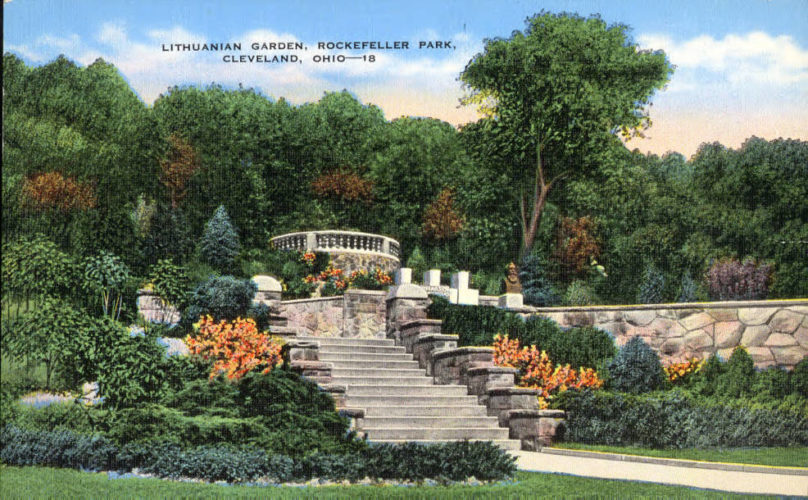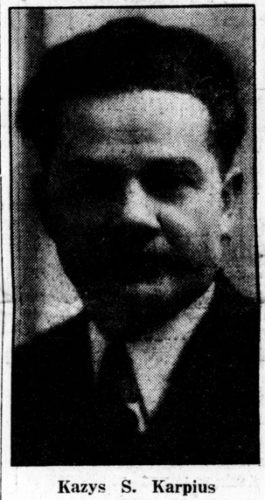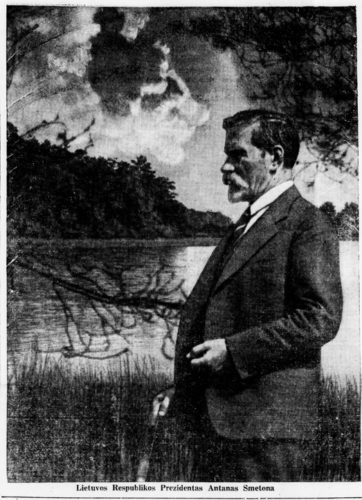Lithuanian Newspaper Now on Chronicling America!

Lithuanian immigrants arrived in Cleveland, Ohio, in two waves: the first was in the late 19th century, starting in 1871, and the second was during and after World War II. By 1920, there were between 10,000 and 12,000 Lithuanians in the city and along Lake Erie, with over 20,000 total in Ohio. The early center for Cleveland Lithuanians was around St. Clair and Oregon Avenue (now Rockwell). They often took low-paying jobs in factories or as day laborers, and some opened taverns or supplied their kinsmen with Lithuanian products. Most were Catholic, and the church served as a center of daily life. By 1895, they had established their own church–St. George Lithuanian Church–and in 1929, a second parish, Our Lady of Perpetual Help, was created. The community continued to expand, forming the Lithuanian Building and Loan Association (later the Superior Savings & Loan Association) in 1906; the Lithuanian Hall Society, the community’s cultural and artistic center, in 1920; and various benevolent societies of local and national focus, which numbered over 35 by 1930.
To help keep a sense of community and heritage, Lithuanian-language newspapers were also established. As part of our ongoing effort to digitize foreign language newspapers for Chronicling America, we are pleased to share that the following newspaper is now freely available and full-text seachable:

The paper started as the Santaika (“Peace”) in 1915 and was renamed the Dirva (“Field”) in August 1916; by 1920, it was the only Lithuanian newspaper in Cleveland. Published by the Ohio Lithuanian Publishing Company run by Apdonas B. Bartusevicius (Bartoszewicz) and first edited by Vincas K. Jokubynas, the main editor of the Dirva‘s early run was Kazys S. Karpius (Karpavicius).

Immigrating with his parents in 1909, Karpius attended Western Reserve University and worked at a number of publications before becoming editor of the Dirva in 1918. He would remain with the paper for the next 30 years, gaining a controlling interest in 1925. During World War I, Karpius had participated in the Lithuanian Rescue Fund, helping care for war victims and demanding autonomy for Lithuania. Karpius remained heavily involved in Lithuanian groups throughout his life and was one of the founders of the American Lithuanian Cultural Center (Amerikos lietuvių kultūros centro) in Cleveland. During World War II, he met with President Franklin D. Roosevelt as a member of a Lithuanian independence group.
Publishing local, national, and international news, the Dirva was circulated widely in other states with significant Lithuanian populations, including Connecticut, Pennsylvania, Maryland, and Michigan. Detroit and Pittsburgh had especially large circulation numbers due to their lack of a local Lithuanian press. A main goal of the paper during Karpius’s tenure as editor was to keep the older members of the community in touch with news in Lithuania as well as developments in the United States. The Dirva published content local to the various cities it serviced, as well as national and international news, especially news concerning Lithuania and the Lithuanian people. Other content included birthday and death announcements, movie reviews, daily questions, labor union news, and traffic reports. Reflecting Karpius’s personal interests, the Dirva often included poems and fiction excerpts, as well as news about contemporary authors. In later years, there occasionally appeared a few columns in English, generally focusing on international news.

During World War II, the Dirva tried to stay centrist, publishing both anti-fascist and anti-communist content. Some 4,000 Lithuanians, including the last president of Lithuania, Antanas Smetona, settled in Cleveland after the Soviet Union’s annexation of their country. These newer immigrants initially thought that Lithuania’s independence would be restored after World War II and that they would shortly be returning home after the Soviet Union was removed from Lithuania, and so created their own organizations rather than joining existing ones. Instead, Lithuania remained under Soviet control for decades. Among the cornerstones of the Lithuanian community in Cleveland that benefited from this second wave of immigration were St. George Lithuanian Church, Our Lady of Perpetual Help, and the Dirva, which increased its publication schedule from weekly to triweekly, before eventually returning to once a week. In the 1960s, the Dirva became the organ of the Lithuanian National Alliance of America, and today it is one of the last Lithuanian newspapers still published in the United States.
Explore the history of this immigrant community in their own words through newspapers digitized for Chronicling America and numerous hardcopy and microfilm editions of newspapers held by cultural heritage institutions across the country. For tips on translating this content into English, check out our “Using Online Translation Tools” YouTube video.
Thanks to Bronwyn Benson, Quality Control Technician for the National Digital Newspaper Program in Ohio, for this week’s post!
Chronicling America is the collaborative project of the National Endowment for the Humanities, Library of Congress and state partners, like the Ohio History Connection, to preserve and provide increased access to America’s historic newspapers through the National Digital Newspaper Program. By the end of 2018, the Ohio History Connection will have contributed over 400,000 pages of Ohio’s historic newspapers, including over 100,000 of foreign language content. For more information, visit the National Digital Newspaper Program in Ohio Project Website.



Leave a Reply
You must be logged in to post a comment.